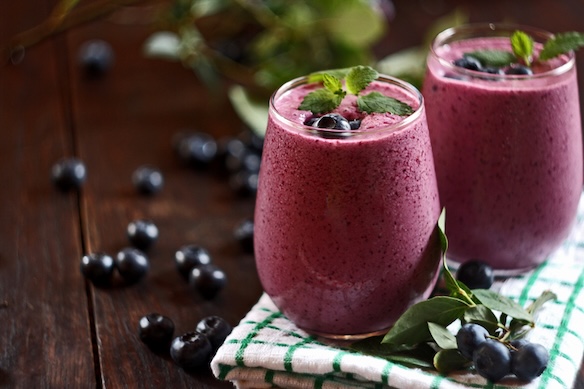When you're trying to improve your diet and feel better, cutting down on sugar and salt can be a first line of defense. Many people find that lessening the amount of sugar and salt in their diets is more easily said than done, however. Thankfully, implementing a few simple tips and tricks can make it easier for you to cut down on sugar and salt.
Here, we'll take a look at the benefits of cutting down on salt and sugar, some alternative ways to enjoy delicious food while still sticking to your nutrition plan, and recipes you can try to kick-start a low salt low sugar diet.
Benefits of cutting down on salt
It can be confusing to understand how large amounts of salt sneak into the diet, especially if you're not someone who typically utilizes a salt shaker when you're sitting down to eat. Salt is added to the vast majority of processed foods as both a flavoring and preservative, and you might be surprised to learn just where sodium is lurking in your kitchen.
Foods that are surprisingly high in salt can include:
- Bagels
- Cereal
- Pasta sauce
- Veggie burgers
- Salad dressing
- Cheese
- Pumpernickel bread
- Ketchup
- Cake mix
- Packaged baked goods
- Canned vegetables
While your body needs some salt to function, adopting a low-salt diet is key to good health for many people. While the Food and Drug Administration recommends that we get about 1,500mg of salt each day, most Americans take in more than 3,000mg. Too much salt can result in inflammation due to fluid retention, high blood pressure, cardiovascular disease, kidney disease, kidney stones, weight gain, digestive issues, osteoporosis, cancer, stroke, and more.
The good news: making the switch to a low-salt diet can cause noticeable changes in your health in as little as a week. Many people find that their blood pressure decreases within a week of switching to a low-sodium diet. Many people also notice that their taste preferences begin to change within about a week of switching to a low-salt diet. While foods with less salt may taste bland at first, taste buds tend to adjust to a lower-salt diet fairly quickly.
Benefits of a low sugar diet
Cutting down on your sugar intake can also offer many benefits for your health. Just like salt, sugar tends to hide in unexpected places, and knowing where to look can help you eliminate unnecessary sugar grams in your diet.
Foods that are surprisingly high in sugar can include:
- Low-fat yogurt
- BBQ sauce
- Ketchup
- Spaghetti sauce
- Fruit juice
- Sports drinks
- Granola
- Flavored coffee drinks
- Protein bars
- Canned fruit
- Breakfast cereal
While it's very difficult to avoid all sugar in your diet, cutting out added sugar—that is, sugar that's added to foods and drinks during processing and/or preparation—can help you seriously curb your intake.
There are many benefits to lowering your sugar intake. When you remove processed or added sugars from your diet, you're likely going to decrease your overall caloric intake, which can help you maintain a healthy weight. Sugar is inflammatory, and eliminating sugar from your diet can also protect your body against heart disease, obesity, digestive conditions, Alzheimer's disease, psoriasis, and more.
In addition to bolstering your body's natural defenses against a wide variety of health conditions, lowering your sugar intake can also help you lose weight, maintain good oral health, and reduce acne.
Try these salt and sugar seasoning alternatives
When you begin the process of reducing the amount of salt and sugar in your diet, you might go through an adjustment process. Using alternative seasonings can help you enjoy food while your taste buds get used to a low salt low sugar diet.
Seasonings you may enjoy in place of salt and/or sugar include:
- Cinnamon (a great sugar substitute, especially over oatmeal or baked goods, can also work well as a salt substitute for some foods)
- Allspice (similar to cinnamon, a good fit for adding sweetness to sauces and glazes)
- Ginger (warm and slightly spicy, can add complexity to a dish that's lacking flavor)
- Lemon (great as a salt substitute in both cooked and cold dishes)
- Basil (works especially well as a salt substitute in Mediterranean dishes)
It can take some time to get used to new flavors, but this doesn't mean that making the switch won't be worth your while. Give yourself at least a week to get used to the change in your diet, and know that missing salt and sugar is temporary—you'll soon get used to your new way of eating.
Low sugar, low salt recipes to help you stick to your plan
Whether you're getting started with a paleo diet, searching for low sugar desserts, or simply want to begin to reap the benefits of a low salt low sugar diet, try adding these recipes to your routine.
Main dishes:
- Avocado and kale omelet
- Everything bagel avocado toast
- Egyptian egg salad
- Spanish tortilla
- Mango salad with avocado and black beans
- Shrimp tacos with avocado crema
- Chicken parmesan and quinoa stuffed peppers
Desserts:
At Evidation, we're here to help you live your healthiest life, one decision at a time
When you download the Evidation app, you'll have us in your corner through every step of your health journey. Whether you're just getting started with cleaning up your nutrition or you've been working at your wellness for years and want to take it to the next level, we're here to help.
Using Evidation is simple: when you download our free app, you'll be able to connect the health data you're already tracking. You're in control of your data at all times, and your privacy is our top priority. We'll use the data you choose to share to find connections, patterns, and insights, and provide you with content-based, personalized recommendations to help you make the decisions that move your health forward. Click here to learn more about how Evidation works and get started today.











